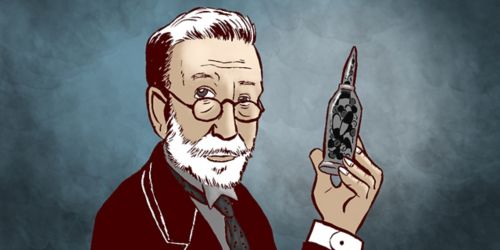St. Jude Family of Websites
Explore our cutting edge research, world-class patient care, career opportunities and more.
St. Jude Children's Research Hospital Home

- Fundraising
St. Jude Family of Websites
Explore our cutting edge research, world-class patient care, career opportunities and more.
St. Jude Children's Research Hospital Home

- Fundraising
New chemotherapies change the paradigm of cancer treatment

The principles of chemotherapy were founded by Paul Ehrlich in the early 1900s. The German Nobel Laureate was noted for his scientific concept of a “magic bullet” — that it was possible to kill specific things in the body that cause disease without harming the body itself.
As many as 80 different medication steps may be performed by a pharmacist for a specific patient who’s undergoing cancer therapy. At St. Jude, medications must also be coordinated to be consistent with specific clinical trials as well as medical conditions the patient may have. Coordination among all clinical staff is critical to the success of the patient as well as the trial. William Greene, PharmD, St. Jude Chief Pharmaceutical Officer, recently offered insights into this topic during a seminar for students in the hospital’s Pediatric Oncology Education program.
Long-term medication and treatment
For many years, chemotherapy to treat cancer focused on curing the disease. Failure to achieve a cure has typically been associated with short or no periods of remission — and subsequent relapse and death of the patient. Newer therapies for some types of cancer have changed this paradigm, where long-term remission, but not a cure, becomes the norm. As a result, patients require long-term treatment with various newer agents to control the disease, just as they do when being treated for disorders such as hypertension.
The principles of chemotherapy were founded by Paul Ehrlich in the early 1900s. Whether directing chemotherapy toward microbes or cancer cells, Ehrlich focused on the concept of attacking specific cell receptors. Subsequent chemotherapy more effectively killed rapidly dividing cells. Whether for infection or for cancer, the application of chemotherapy attempted to capitalize on the differences between normal human cells and the target cells (cancer or microbe).
Therapeutic intent matters for medication
Chemotherapy can be used alone or in combination with other treatment approaches for control of cancer. That means selection and dosing strategies are guided by the intent of therapy. Combinations of drugs help facilitate the killing of cells and help overcome any potential emergence of resistance.
Defining the optimal dose of drugs has typically involved studies that determine the “maximum tolerated dosage,” but newer therapies and a greater knowledge of drug- and disease-specific factors are helping scientists develop many more individualized approaches to therapy, as well as individualized approaches to drug dosing.
When used in combination with surgery or radiation therapy, the chemotherapy can be adjuvant therapy or neoadjuvant therapy. The former takes advantage of the tumor-reducing effectiveness of the chemotherapy along with that of the other modality. Neoadjuvant therapy refers to a similar combination of chemotherapy with either radiation or surgery, but the chemotherapy is given before the other intervention, with the intent of shrinking the tumor and facilitating the success of the additional treatment.
Pharmacy as critical component of care
This is where the pharmacist becomes a critical part of patient care. Cancer therapies are typically high-risk drugs with many potential side effects and drug interactions, which manifest in different ways and at different times during treatment. Some of the more common chemotherapy drug side effects include myelosuppression (reduced platelets, red blood cells and white blood cells arising out of the decrease in bone marrow activity), nausea and vomiting, diarrhea, tiredness and weakness, skin rashes and many others. In addition, the drugs used to treat cancer may have unique administration or monitoring requirements (such as blood concentration monitoring). Treatment of these patients is often very "drug intense." For example, a patient admitted to the hospital for cancer care might have more than 30 medications active during their course of care. In consideration of these many variables and risks, the need for a drug expert who understands the health care system as well as the intent and desired outcomes of treatment, is apparent.
Physicians, pharmacists and nurses are all responsible to help ensure all required elements of therapy are correct. These and many more considerations require careful attention from all professionals involved in cancer chemotherapy.






